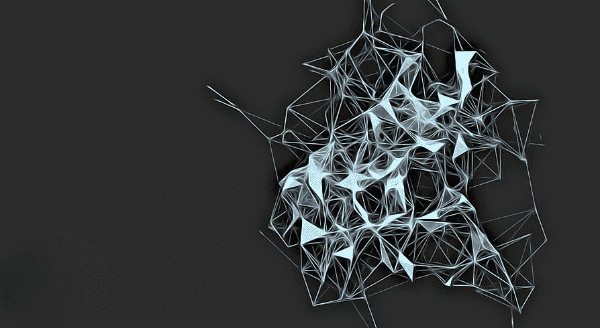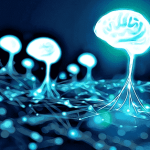Bayesian Networks:
Definition:
Bayesian networks, also known as belief networks or directed graphical models, are graphical representations of probabilistic relationships among a set of variables. They consist of nodes, which represent variables, and directed edges, which represent probabilistic dependencies between variables.
Structure:
The structure of a Bayesian network is defined by a directed acyclic graph (DAG), where each node represents a random variable and edges represent direct dependencies between variables. Nodes are associated with conditional probability distributions that quantify the probabilistic relationships between a node and its parents in the graph.
Inference:
Bayesian networks enable inference, where given evidence about certain variables, the network can compute the probabilities of other variables in the system. This is typically done using algorithms such as variable elimination, belief propagation, or Markov chain Monte Carlo (MCMC) methods.
Applications:
Bayesian networks are used in a variety of fields, including medical diagnosis, risk assessment, anomaly detection, and decision support systems.
Example:
Let’s consider a simple example of a diagnostic system for a medical condition. Suppose we have three variables:
- Symptom (S): Whether a patient has a particular symptom (e.g., coughing).
- Disease (D): Whether the patient has a particular disease (e.g., flu).
- Test (T): The result of a diagnostic test for the disease.
We want to model the probabilistic relationships between these variables using a Bayesian network.
Bayesian Network Structure:
- Symptom (S) can influence the likelihood of having the disease (D).
- Disease (D) can influence the results of the diagnostic test (T).
Code Implementation:
We can use libraries like pgmpy in Python to create and manipulate Bayesian networks. First, you’ll need to install it:
pip install pgmpyHere’s the Python code to create and analyze the Bayesian network:
from pgmpy.models import BayesianModel
from pgmpy.factors.discrete import TabularCPD
from pgmpy.inference import VariableElimination
# Define the structure of the Bayesian network
model = BayesianModel([('S', 'D'), ('D', 'T')])
# Define conditional probability distributions (CPDs)
cpd_symptom = TabularCPD(variable='S', variable_card=2, values=[[0.5], [0.5]])
cpd_disease = TabularCPD(variable='D', variable_card=2, values=[[0.6, 0.3], [0.4, 0.7]],
evidence=['S'], evidence_card=[2])
cpd_test = TabularCPD(variable='T', variable_card=2, values=[[0.9, 0.2], [0.1, 0.8]],
evidence=['D'], evidence_card=[2])
# Add CPDs to the model
model.add_cpds(cpd_symptom, cpd_disease, cpd_test)
# Check if the model is correctly defined
print(model.check_model())
# Perform inference
inference = VariableElimination(model)
# Compute the probability of Disease given evidence of Symptom=1 and Test=1
result = inference.query(variables=['D'], evidence={'S': 1, 'T': 1})
print(result)This code defines a Bayesian network with the specified structure and conditional probability distributions (CPDs) and performs inference to compute the probability of the disease given evidence of symptom and test results.
In this example:
cpd_symptomrepresents the probability of having a symptom.cpd_diseaserepresents the probability of having the disease given the symptom.cpd_testrepresents the probability of test results given the disease.
The VariableElimination class is used for exact inference. You can also perform approximate inference using other methods like Gibbs sampling or belief propagation.
This example demonstrates how Bayesian networks can be implemented and used for reasoning under uncertainty in real-world applications like medical diagnosis.
Probabilistic Graphical Models (PGMs):
Definition:
Probabilistic graphical models (PGMs) are a general framework for representing and reasoning with probabilistic relationships between variables. They encompass both Bayesian networks and Markov networks (also known as undirected graphical models).
Types:
PGMs can be classified into two main types: directed graphical models (Bayesian networks) and undirected graphical models (Markov networks). Each type represents different aspects of probabilistic relationships between variables.
Factor Graphs:
Factor graphs are another graphical representation commonly used in PGMs. They represent the factorization of the joint probability distribution over the variables in the model.
Inference:
Like Bayesian networks, probabilistic graphical models enable inference to compute the probabilities of variables given evidence. Inference algorithms vary depending on the type of graphical model and the structure of the model.
Applications:
PGMs are widely used in machine learning, pattern recognition, computer vision, natural language processing, and many other areas where uncertainty needs to be modeled and reasoning needs to be performed.
Probabilistic Graphical Models (PGMs) are a framework for representing and reasoning about uncertainty in complex systems. Let’s explore PGMs with an example and code using Python’s pgmpy library.
Example:
Consider a simple example of a student’s performance. We have three variables:
- Difficulty (D): The difficulty level of a test.
- Intelligence (I): The intelligence level of the student.
- Grade (G): The grade obtained by the student.
We want to model how the difficulty level of a test and the intelligence level of a student influence the grade obtained.
Probabilistic Graphical Model:
We can represent this scenario using a Bayesian network where Difficulty and Intelligence are parent nodes influencing the Grade node.
Code Implementation:
First, install pgmpy if you haven’t already:
pip install pgmpyNow, let’s create the Bayesian network and perform some analysis:
from pgmpy.models import BayesianModel
from pgmpy.factors.discrete import TabularCPD
from pgmpy.inference import VariableElimination
# Define the structure of the Bayesian network
model = BayesianModel([('D', 'G'), ('I', 'G')])
# Define conditional probability distributions (CPDs)
cpd_difficulty = TabularCPD(variable='D', variable_card=2, values=[[0.6], [0.4]])
cpd_intelligence = TabularCPD(variable='I', variable_card=2, values=[[0.7], [0.3]])
cpd_grade = TabularCPD(variable='G', variable_card=3,
values=[[0.3, 0.05, 0.9, 0.5],
[0.4, 0.25, 0.08, 0.3],
[0.3, 0.7, 0.02, 0.2]],
evidence=['D', 'I'], evidence_card=[2, 2])
# Add CPDs to the model
model.add_cpds(cpd_difficulty, cpd_intelligence, cpd_grade)
# Check if the model is correctly defined
print(model.check_model())
# Perform inference
inference = VariableElimination(model)
# Compute the probability of Grade given evidence of Difficulty=0 and Intelligence=1
result = inference.query(variables=['G'], evidence={'D': 0, 'I': 1})
print(result)In this code:
cpd_difficultyandcpd_intelligencerepresent the probabilities of difficulty and intelligence levels, respectively.cpd_graderepresents the probability of grades given the difficulty and intelligence levels.- The
VariableEliminationclass is used for exact inference. - We query the probability of the grade given evidence of difficulty=0 and intelligence=1.
This example demonstrates how PGMs can be used to model and reason about probabilistic relationships between variables in complex systems. It shows how to define a Bayesian network, specify conditional probability distributions, and perform inference to make probabilistic predictions.
Life’s greatest treasures often lie in the moments we least expect, so cherish each fleeting second with gratitude!!
K
“Like a phoenix rising from the ashes, let each challenge ignite the flames of your resilience and determination!!” – K
Seize the day with the fervor of a dreamer and the wisdom of a sage, for within each moment lies infinite potential!!
K


